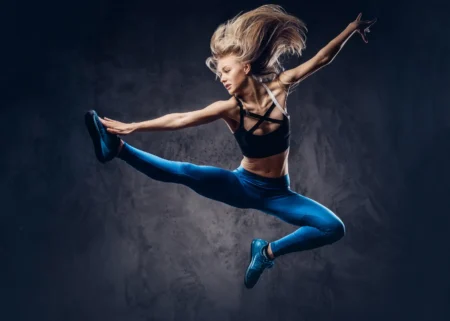 Before fitness became an industry and gyms turned into social hubs, there was aerobics — simple, rhythmic movement set to music, created not for competition but for joy. It began in the late 1960s, when Dr. Kenneth Cooper, an Air Force physician, introduced the term “aerobics” to describe exercises that improve how the body uses oxygen.
Before fitness became an industry and gyms turned into social hubs, there was aerobics — simple, rhythmic movement set to music, created not for competition but for joy. It began in the late 1960s, when Dr. Kenneth Cooper, an Air Force physician, introduced the term “aerobics” to describe exercises that improve how the body uses oxygen.
But it wasn’t until the 1980s that aerobics truly exploded — thanks to upbeat classes, colorful leotards, and the realization that working out could actually feel fun. It was a new kind of fitness: accessible, musical, communal. People discovered that movement could heal not just the body, but the mood.
More Than Just Exercise
At its core, aerobics is simple — it’s any sustained movement that raises your heart rate and makes you breathe deeper. That can mean classic step routines, dance-based sessions, or even water aerobics. The science behind it hasn’t changed: your body takes in more oxygen, your lungs work harder, your heart pumps stronger, and over time, your entire system becomes more efficient.
Unlike high-intensity workouts that focus on short bursts of effort, aerobics builds endurance. It trains the body to handle stress better — not just during exercise, but in everyday life.
It’s movement for longevity, not just aesthetics.
What It Does for the Body
Regular aerobic activity has a ripple effect. It strengthens the heart, lowers blood pressure, and improves circulation. Your lungs expand their capacity, your muscles become more resistant to fatigue, and your metabolism learns to use energy more efficiently.
Over time, people who practice aerobic exercises notice they sleep better, recover faster, and feel calmer. The steady rhythm of movement teaches the body to find balance — between effort and rest, tension and release.
It’s not about speed or perfection; it’s about consistency. Even moderate sessions, done a few times a week, can dramatically lower the risk of heart disease, diabetes, and obesity.
The Mental Side of Movement
What makes aerobics special isn’t just what it does for the body — it’s what it does for the mind.
Aerobic exercise triggers the release of endorphins, those “feel-good” hormones that lift mood and fight stress. The combination of music and coordinated motion works like meditation in movement. You’re counting beats, following rhythm, syncing body and breath — there’s no room left for overthinking.
That’s why people often leave a class smiling, not exhausted. The body feels light, and the mind feels clear. It’s therapy through rhythm.
Adaptable for Every Age
One reason aerobics has lasted for decades is its flexibility. It fits almost anyone — from teens to seniors — because intensity can be adjusted. You don’t need machines or heavy weights; just space, music, and a bit of energy.
Low-impact forms like water aerobics or gentle dance movements make it safe even for people recovering from injuries or dealing with joint pain. The key is movement that feels natural — enough to raise your heart rate, not enough to strain it.
That’s the quiet beauty of aerobics: it meets you where you are.
More Than a Trend
While fitness trends come and go — from CrossFit to spin classes — aerobics has never really disappeared. It simply evolved. Today, it lives inside every dance workout, every group fitness class that moves to music.
Its essence remains the same: coordinated movement, steady rhythm, and joy in motion.
In an age obsessed with performance metrics and gym gadgets, aerobics reminds us that movement doesn’t have to be measured to matter. It just has to make you feel alive.
The Bottom Line
Aerobics was never about perfection — it was about participation. About remembering that the heart is a muscle meant to move and that breath is life’s rhythm.
Half a century later, it still works for one simple reason: it connects what modern life often separates — the body, the breath, and the beat.
Because sometimes, the best way to take care of yourself is to turn on some music and just keep moving.
Picture Credit: Freepik
